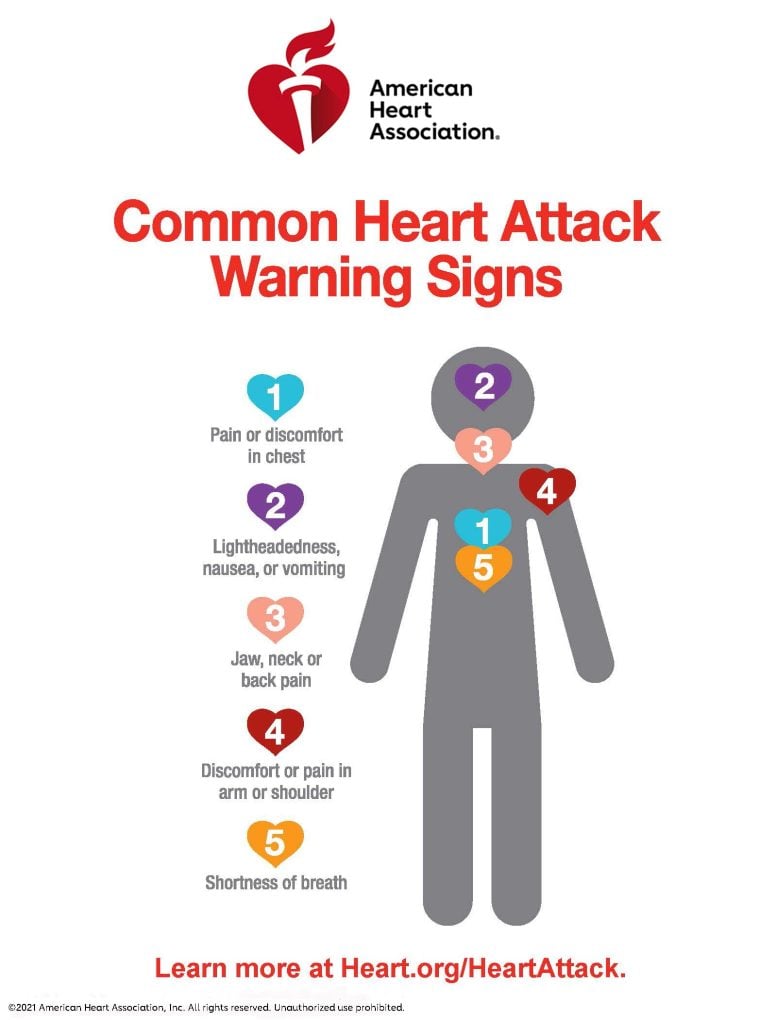
Human Chest Cavity illustration: Right lung, left lung, heart. Credit: Copyright American Heart Association
- An analysis of more than 600,000 U.S. death records from a national database found that middle-aged adults, men, Black adults, and adults living in rural areas had higher rates of heart attack death compared to young adults, women, white adults, and people living in urban areas.
- Overall, premature heart attacks in the U.S. declined by 52% between 1999-2019.
- However, after an initial decline, the deceleration in death rates has plateaued across demographic subgroups between 2011 and 2019, highlighting the need for public health interventions to improve cardiovascular outcomes in people younger than age 65.
Middle-aged adults, men, Black adults, and adults living in rural counties have significantly higher heart attack death rates before the age of 65 compared to women, white adults and people living in urban counties, according to new research published today (December 22, 2021) in the Journal of the American Heart Association, an open access, peer-reviewed journal of the American Heart Association.
“Cardiovascular disease is the leading cause of death in the United States, and acute myocardial infarction or heart attack, is a major contributor,” said lead study author Safi U. Khan, M.D., M.S., a cardiology fellow at the DeBakey Heart and Vascular Institute at Houston Methodist Hospital in Houston. “The cardiovascular risks among adults younger than age 65 has become increasingly complex during the last two decades. Our study focused explicitly on premature deaths due to a heart attack to identify demographic and regional differences, which may help to inform targeted interventions.”
Khan and colleagues reviewed the Centers for Disease Control and Prevention (CDC) Wide-Ranging OnLine Data for Epidemiologic Research (WONDER) database to examine premature death rates in adults younger than age 65 across the U.S. According to the data, between 1999 and 2019, premature heart attack was listed as the primary cause of death for more than 615,000 people in the U.S.
The analysis found significant demographic and regional disparities in premature death rates due to heart attack:
- Death rates were nearly 3 times higher among men than women (20.0 vs. 7.3 per 100,000 person-years for men vs. women, respectively).
- Death rates were higher among Black adults than white adults (17.5 vs. 13.7 per 100,000 person-years, respectively).
- There were higher death rates in Southern states (Arkansas, Mississippi, Kentucky, Louisiana and Tennessee) compared to Western and Northeastern states.
- Middle-aged adults (ages 45-64) had higher death rates than younger adults (ages 18-44) (34.9 vs. 2.5 per 100,000 person-years, respectively).
- Premature death rates in rural counties were higher than in urban counties – the average annual percent decline in heart attack deaths among those younger than 65 was -4.2 per year in large metro areas compared to only -2.4 per year in rural counties.
“These trends highlight distinct health care disparities among people from diverse racial and ethnic backgrounds,” Khan said. “For example, low socioeconomic status, higher prevalence of having no health insurance and higher prevalence of cardiovascular risk factors, such as smoking, hyperlipidemia, Type 2 diabetes, and high blood pressure, among racial/ethnic minorities – all of these factors widened the health gap for people from diverse racial and ethnic groups. Furthermore, people in rural areas were more likely to have limited access to health care. Based on our analysis, these social determinants of health may influence the death rate due to heart attack among younger adults.”
The analysis also found that between 1999 and 2011, the premature death rate decreased by 4.3% per year. However, the rate of decline slowed to 2.1% per year between 2011 and 2019. These patterns were consistent regardless of age, sex, ethnicity/race, and across all U.S. counties.
“Recent medical advancements have reduced major adverse cardiovascular outcomes for patients who have had a heart attack, so we were surprised by the deceleration in the decline of premature death rates during the last decade. This concerning trend reflects the growing burden of cardiovascular disease among younger adults. Implementing evidence-based strategies to prevent and treat premature cardiovascular disease, and public health efforts targeting high-risk groups may help to narrow some of the disparities and improve outcomes among patients after a heart attack,” Khan added.
During his presidential address at the American Heart Association’s Scientific Sessions 2021 last month, American Heart Association President Donald M. Lloyd-Jones, M.D., Sc.M., FAHA, said, “The rising levels of obesity and widening socioeconomic disparities are responsible for an overall stagnation in the decline of heart disease deaths. Creating and maintaining high cardiovascular health from birth – called primordial prevention – should be the new foundation of cardiovascular health.
“Primordial prevention is the only way for us to break the current stagnation and re-invigorate the decline in cardiovascular events and deaths,” Lloyd-Jones said in the Lewis A. Conner Presidential Address: Launching a Generation with Ideal Cardiovascular Health. “It means we don’t just try to prevent disease by modifying risk factors; we also try to prevent the development of risk factors in the first place.”
To achieve this, Lloyd-Jones noted, the health care community “must address gaping holes in public health infrastructure laid bare by the COVID-19 pandemic; transform clinical care, engage in far-reaching research and address social determinants of health.”
Reference: “Trends in Premature Mortality From Acute Myocardial Infarction in the United States, 1999 to 2019” by Sourbha S. Dani, Ahmad N. Lone, Zulqarnain Javed, Muhammad S. Khan, Muhammad Zia Khan, Edo Kaluski, Salim S. Virani, Michael D. Shapiro, Miguel Cainzos-Achirica, Khurram Nasir and Safi U. Khan, 22 December 2021, Journal of the American Heart Association.
DOI: 10.1161/JAHA.121.021682
Co-authors of the study are Sourbha S. Dani, M.D., M.Sc.; Ahmad N. Lone, M.D.; Zulqarnain Javed, M.B.B.S., M.P.H., Ph.D.; Muhammad Shahzeb Khan, M.D., M.Sc.; Muhammad Zia Khan, M.D.; Edo Kaluski, M.D.; Salim S. Virani, M.D., Ph.D.; Michael D. Shapiro, D.O., M.C.R.; Miguel Cainzos-Achirica, M.D., M.P.H., Ph.D.; and Khurram Nasir, M.D., M.P.H., M.Sc. Authors’ disclosures are listed in the manuscript.










Be the first to comment on "Rates of Premature Heart Attack Death Vary by Sex, Race and Region in the US – Here’s Who Is Most at Risk"